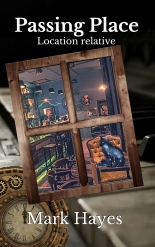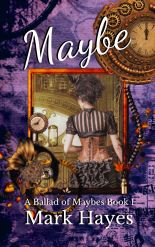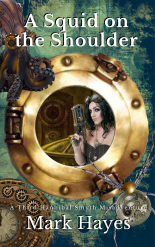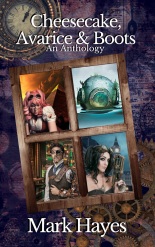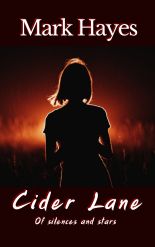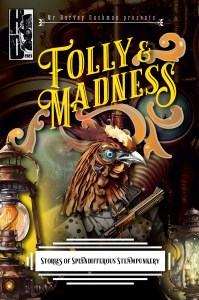‘How to Write a Blackwood Article’ and ‘A Predicament’ are two parody’s written by Poe and published in the same edition of the magazine, American Museum. One serves as an introductory piece for the other and in effect they form a single narrative. So in defiance of normality I am going to treat these two tales as one, as without being cast in the light of ‘How to Write a Blackwood Article’ the second ‘A Predicament’ is all but unreadable. But before we get to the tales a little background.
Blackwood’s , or to give its its full title ‘Blackwood’s Edinburgh Magazine’ was a quarterly magazine that began life in 1817 and by the time Poe wrote these tales in 1838 it had achieved a certain notoriety for the outlandish lurid stories presented as ‘articles’. This was not how the magazine started out, as it was originally conceived as a conservative rival to Whig supporting periodical, ‘The Edinburgh Review’.
For those not conversant with 19th century British political party the Whigs were the progressive left wing of the time, as opposed to the Tory’s who represented much as they do now, the political right. The British Whigs should not be confused with the American Whig party which was one of the proto-republican parties that later merged to formed the GOP. British Whigs and American Whigs were of the opposite political spectrum on almost all counts. Though both were equally pompous as a rule, and tended to spend a lot of time shout the other side down…
So no change there.
In any regard while ‘Blackwood’s’ began as a right wing periodical, before long it moved more towards a populist stance, publishing works of notoriously bohemian poets, Shelly and Coldridge among others. There were even articles by women rights advocates (though this being the early 19th century these were almost all men, because you might publish an article advocating the emancipation of the fairer sex, but not have it taken seriously if you attributed the writing of it to a woman, that would of course be absurd…) In any even while it still pertained to be to the right of politics it became increasing apolitical and sensationalist as the years went by. Which is to say, the publishers sought to make a buck or three and didn’t much care how they did so.
So no change there either…
After its first few years, and at least one dual being fought over ‘libellous’ content which led to the death of a rival magazines editor. (Once again, publishing in the 1800’s was not for the faint hearted) A new editor John Wilson came to the helm and pitched the magazine to an even broader market, publishing more horror stories and increasingly outlandish articles generally of fiction dressed up as fact. From which it developed a reputation somewhat along the lines of modern magazines like ‘The National Enquirer’. Which is to say it never let truth get in the way of a good story . A reputation that left it wide open to parody, a sitting duck at which our Dear Edgar took somewhat gleeful aim…

‘How to Write a Blackwood Article’
The delightfully named Signora Psyche Zenobia narrates both tales, in the first one she approach’s the editor of Blackwood’s magazine in order to gain his advice on how bets to write an article for them. Her main motivation for this is it seems to establish her name as a writer, and in doing so rid herself of the nickname Suky Snobbs. A nick name foisted upon her by her bitter rival rival Tabitha Turnip. There is much bemoaning of this, which sets the tone…
The editor advises her on how best to write an article, how any article is improved with a quote or three. Better still if the quote is in German, or one of the dead languages. Greek in the original Greek alphabet for example is much desired. He goes on to advise her to take large quantities of pills then report on the sensations, include at least one animal, and a strange acquaintance that you can describe in freakish detail. Indulge in the hedonistic, report not facts so much as sensations, use evocative words and compounded sentences, and more quotes, and is at all possible get yourself drown or choke upon a chicken bone and report on the near death experience. Indeed if at all possible, actually die and then report on your experience….
Eventually she runs for the hills, fleeing his offices in fear for her life as the editor seems to be more than a little deranged, and looking forward to helping her with her article by means of a sharp knife …
‘A Predicament’
When next we meet Signora Psyche Zenobia, she tells us a new story, a story reported in the exact way she was advised to write by the editor in the first tale… Up to and including the death of the narrator , with quotes in German…. ish
‘Unt stubby dukl, so stubby dun duk she! duk she!’
which she translates for us as
‘and if I died at least i died for thee, for thee’
Except of course that is not actually the German for ‘and if I died at least i died for thee for thee’ that would be ‘ Und wenn ich gestorben bin, bin ich zumindest für dich gestorben’. Nor are the quotes in Greek and Latin, actually Greek or Latin. Because everything in ‘A Predicament’ is Signora Psyche Zenobia attempt at writing an article to present to the editor, following his advice. It is over the top and meant to be just that. She has a pet dog that could fit in her handbag, an unfortunate servant (very unfortunate to modern eyes) and she does indeed die in the end, before reporting on the sensations of her death…
‘A Predicament’ follows all the rules laid out by the editor in ‘How to Write a Blackwood Article’. Together they are clever and witty, but only provided you read the two together. Read apart they hold little interest and are just silly without being particularly funny.
That however is a bit of an issue because even together, while they are a clever and witty combination, they are still not particularly funny unless you are in the right frame of mind for the utter absurdity of it all, which most probably you will not be.
It reads not unlike a bad Monty Python sketch, in two parts with a few animations in between. But it is a Monty Python sketch been reiterated to you in a pub by someone drunker than you. Someone who has never seen John Cleese doing the original version. You know it should be funny, it has all the elements of funny, but it just isn’t…

A TRIO OF VAGUELY AMUSED RAVENS WHO CAN AT LEAST ADMIRE THE SKILL IF NOT THE EXECUTION.
SHOULD YOU READ IT: It well written and smart it just misses the mark for me. There is also an issue with Psyche Zenobia servant in the second story. He is short, black and the portrait is very much of the mid 1800’s. While not in a particularly nasty way, it is to modem sentiments a tad racist. Though it is problematic because it is ‘of it’s time’ rather than in the Lovecraft ‘even for its time’ way. So forgivable in context, to a degree at least.
Bluffers fact: Blackwood’s had a declining readership form the 1840’s onwards yet remained in publication until its final edition in 1980. While it never regained its former popularity it did pull off one notable literary Coo in 1899 when over the course of three editions it published,Joseph Conrad’s Heart of Darkness. The novel, which while wonderful in its own right, is best known now as forming the basis for Francis Ford Coppola’s masterpiece, Apocalypse Now.

*still for a delightful little graduation film by Csaba Gellár, well worth an amused watch … see link below




